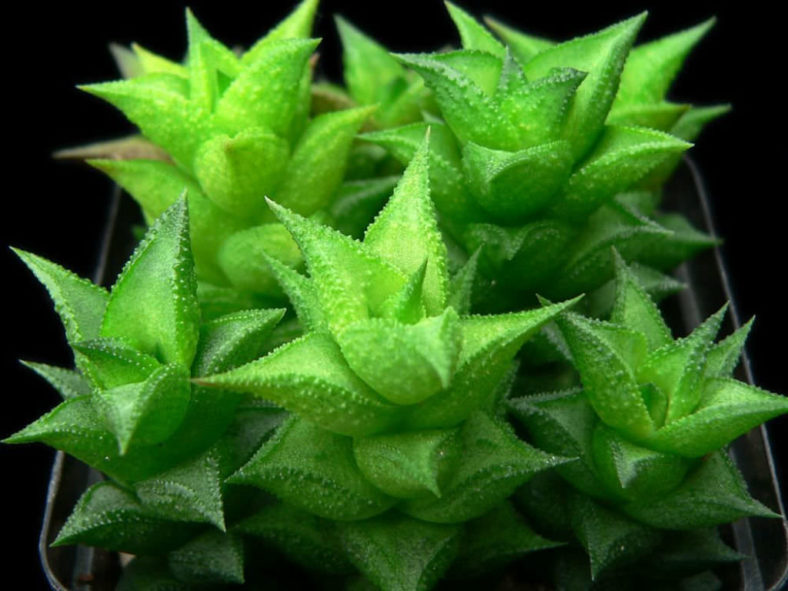Astroloba is a genus of succulents native to South Africa. The name of the genus is a compound of two Greek words, "astros," meaning "star," and "lobos," meaning "lobe," and refers to the star-like shape of the petals, which appear at the end of the tube-like flowers.
Astrolobas are closely related to the genus Haworthia, but they are distinguished by their regular flowers, as opposed to the double-tipped flowers of Haworthia. The flowers are small and white, appearing clustered on slender racemes. Astrolobas bear fleshy, triangular leaves along their stems, forming symmetrical columns. Plants are slow-growing, multi-stemmed, and their long stems tend to sprawl in their rocky native habitat.
Growing Conditions and General Care
Astrolobas are increasingly popular as succulent ornamentals due to the extraordinary beauty of their leaf structure. Some have intricate patterns of lines, margins, spots, and raised tubercles on their leaves. Nearly all of them display a crystal-like regularity in their leaf arrangement. This is not always apparent in wild plants, which are usually disfigured by their harsh habitat.

In cultivation, Astrolobas are at their best when provided with some protection from direct sunlight. They can become wonderful and ornate in a semi-shade environment with well-drained soil and mild conditions.
Unfortunately, when conditions are not ideal, occasional random leaves can die, shrivel, and turn brown along their entire stem. This is unfortunate because much of the plants' beauty comes from the intricate crystalline pattern of their leaves. However, this disfigurement can be avoided by keeping the plants in optimal, fertile conditions – growing steadily and sheltered from stress.
Propagation
All Astrolobas can be propagated by seed, cuttings, offsets, and division of clumps. Cuttings or offsets should be dried for several days to a week in a cool, shady environment before planting in well-drained soil. Seeds should be collected and sown on well-drained soil. Covering them with a very thin, fine layer of sand is optional. Keep moist until they germinate; water regularly until they are relatively large and strong. Keep in a bright spot but out of direct sunlight.
Hybrids can be made between all species (except Astroloba rubriflora, which has evolved highly distinct chemistry in its flowers). Astrolobas can also be hybridized with other related genera, such as Tulista, Gasteria, and Aloe.
Source: haworthia-gasteria.blogspot.com
Links
- Back to genus Astroloba
- Succupedia: Browse succulents by Scientific Name, Common Name, Genus, Family, USDA Hardiness Zone, Origin, or cacti by Genus